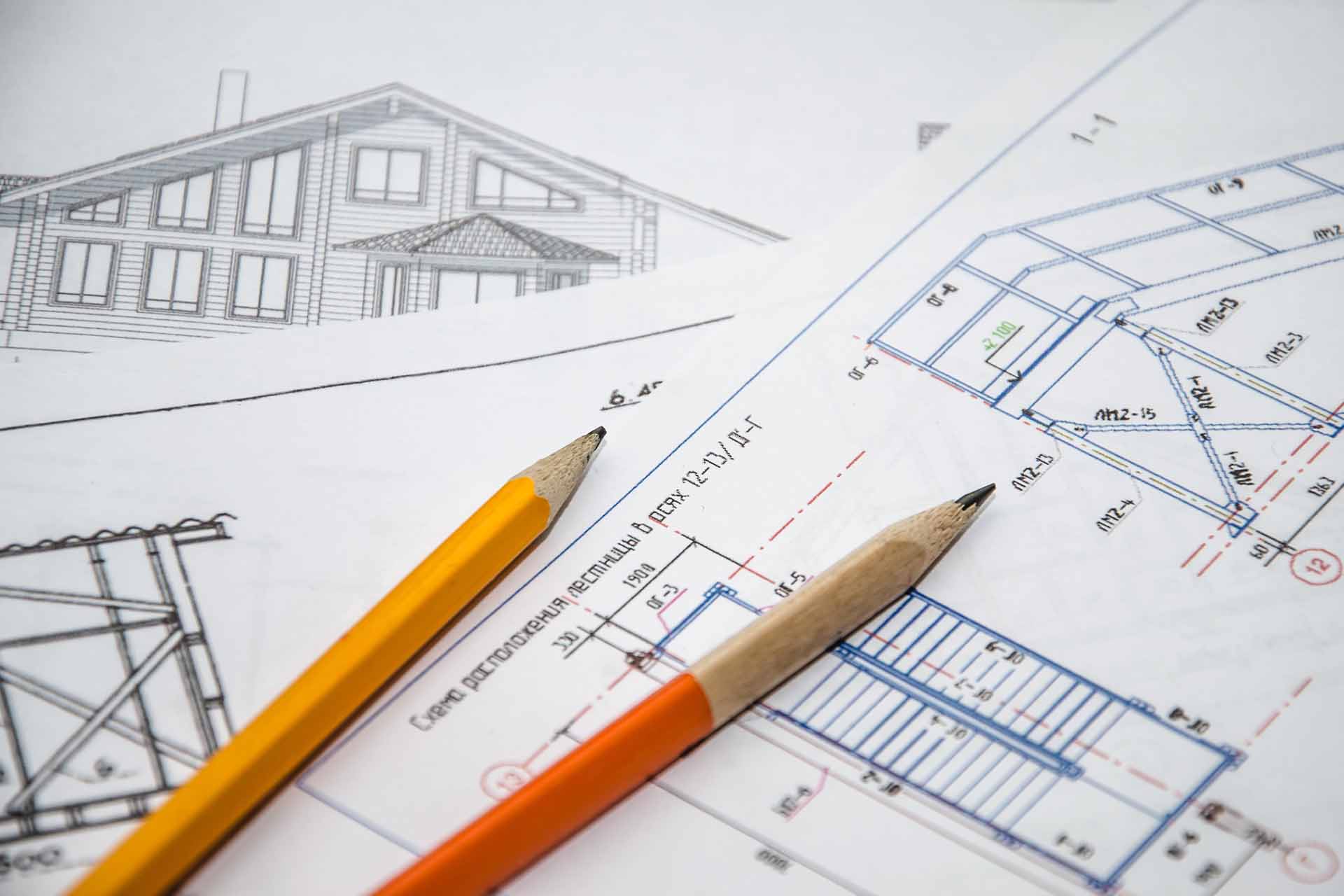Comprehending the Diverse Career Paths Available for Aspiring Architect
As an aspiring Architect, you have a globe of job paths waiting for you. Whether you're drawn to standard architecture or the nuances of lasting layout, there's a particular niche that straightens with your passions.
Conventional Style: Designing Structures and structures
Standard style focuses on making buildings and frameworks that blend performance with aesthetic charm. As you explore this area, you'll appreciate the detailed equilibrium between form and purpose. You'll learn to attract inspiration from historical styles, integrating aspects like symmetry, materials, and craftsmanship. Your designs can show social heritage, showcasing regional traditions while meeting modern requirements.
You'll develop abilities in drafting, model-making, and website evaluation, permitting you to picture and communicate your ideas efficiently. Engaging with clients, you'll need to understand their vision and convert it into viable styles.
Moreover, constructing codes and sustainability practices are necessary in your work, ensuring your frameworks are eco friendly and risk-free. As you expand in your career, you'll locate chances in household, business, and even reconstruction tasks, each offering unique challenges. Accepting typical architecture leads the way for a meeting occupation that pays homage to the past while forming the future.
Urban Preparation: Shaping Neighborhoods and Public Spaces
As an aspiring Architect, you can play a vital duty as a city planner, changing just how areas function and connect. By using area engagement methods, you'll guarantee that citizens have a voice in shaping their setting. Plus, integrating lasting style concepts will certainly aid create rooms that not only satisfy today's demands however also secure the future.
Role of Urban Planners
While lots of could think about designers as the single visionaries behind structures, urban coordinators play an important role fit the wider landscape of neighborhoods and public spaces. They analyze land use, zoning legislations, and area needs to create sustainable atmospheres that improve lifestyle. By teaming up with various stakeholders, you'll aid design parks, transport systems, and suburbs that promote social communication and access. Urban coordinators likewise concentrate on environmental factors to consider, making sure that growths integrate eco-friendly spaces and support biodiversity. Your expertise in spatial style and area dynamics permits you to picture future development while preserving social heritage. In this essential duty, you'll directly influence exactly how people experience their environments, making every task a possibility for favorable change.
Community Engagement Techniques
Effective neighborhood interaction strategies are important for urban planners to assure that the voices of residents are heard and valued in the preparation procedure. To cultivate purposeful discussion, you need to focus on open forums and workshops where neighborhood participants can share their ideas and problems. By actively listening and including responses, you'll create areas that mirror the neighborhood's needs, ultimately leading to even more successful and lasting metropolitan environments.
Lasting Style Principles
When developing urban rooms, incorporating sustainable design concepts is vital for developing environments that prosper both ecologically and socially. You should start by concentrating on power performance, making use of materials that minimize waste and promote recycling. Consider integrating environment-friendly spaces, like parks and gardens, to boost biodiversity and improve air high quality. Promoting walkability and public transportation can lessen reliance on cars, cultivating a healthier area.
Creating with water conservation in mind is likewise key-- believe about rainfall yards and absorptive surface areas to handle stormwater. Involving community participants throughout the planning process guarantees that the areas you develop satisfy their needs and urge social communication. By embracing these concepts, you'll contribute to lively, lasting city landscapes that profit every person.

Landscape Architecture: Producing Lasting Outdoor Environments
As you explore landscape design, you'll find essential design principles that create functional and gorgeous outdoor spaces. Lasting practices play a vital function in making sure these environments grow while minimizing ecological impact. Plus, you'll locate a range of career possibilities that enable you to make a real distinction in how people connect with nature.
Design Concepts in Landscape
Comprehending layout concepts in landscape design is crucial for creating sustainable exterior atmospheres that harmonize with nature. You'll require to ponder aspects like equilibrium, percentage, and range to ensure your styles really feel cohesive and welcoming. Furthermore, pay interest to seasonal adjustments, making with products that enhance the environments year-round.
Lasting Practices Summary
Lasting practices in landscape design not just focus on visual appeals but likewise focus on eco-friendly health and wellness and source preservation. By incorporating indigenous plants, you improve biodiversity and decrease the need for chemical plant foods and chemicals. Implementing reliable irrigation systems aids save water and minimizes overflow, safeguarding close-by ecosystems. You can create rooms that advertise dirt wellness, such as utilizing natural materials and exercising permaculture principles. Additionally, incorporating environment-friendly infrastructure, like rain gardens and porous pavements, aids in stormwater management and decreases urban heat. When you produce exterior settings with sustainability in mind, you add to great post to read a much healthier planet and supply spaces that promote neighborhood link. Ultimately, these methods guarantee your designs profit both people and the atmosphere for years to find.
Job Opportunities Exploration
With a solid foundation in lasting techniques, landscape style uses a range of profession courses that allow you to make a meaningful impact on the setting. Urban planners typically work together with landscape architects to develop environment-friendly areas in metropolitan settings, enhancing city livability. If you're passionate regarding education and learning, take into consideration ending up being a landscape architecture instructor, motivating future generations.
Sustainable Layout: Focusing on Eco-Friendly Practices
As you discover your job in design, embracing eco-friendly methods can set you apart in an affordable area. Sustainable design focuses on producing buildings that decrease ecological influence while enhancing occupant well-being. By incorporating sustainable products, energy-efficient systems, and sustainable structure methods, you'll add to a greener future.
Beginning by getting knowledge of environment-friendly qualifications like LEED or BREEAM, which can strengthen your credentials. Think about exactly how all-natural light, ventilation, and thermal efficiency can optimize design. Collaborate with engineers and environmental professionals to introduce options that reduce waste and conserve sources.
Don't fail to remember the importance of neighborhood participation-- engaging local stakeholders can inspire designs that harmonize with the environment. As clients progressively focus on sustainability, your proficiency in eco-friendly practices will certainly not just attract jobs however additionally meet your interest for liable architecture. Embrace this critical element of the profession, and watch your job grow.
Historic Preservation: Protecting and Bring Back Cultural Heritage
While you commence on your building trip, consider the vital function of historic conservation in preserving our cultural heritage. This field concentrates on the security and restoration of substantial buildings, websites, and structures that tell the tales of our past. By participating in historic preservation, you'll aid safeguard the architectural legacy that shapes area identity.
As a historic preservation Architect, you'll assess historical relevance and evaluate the problem of structures. You'll function closely with historians and conservationists to guarantee genuine restoration strategies are used. This profession more information path enables you to mix creativity with study, allowing you to develop remedies that value original products and craftsmanship.
Your job not only adds to sustainability by recycling existing buildings however additionally promotes a sense of pride within areas. Embracing this path will aid you come to be a guardian of background, protecting the stories and appearances that enhance our lives.
Interior Design: Enhancing Indoor Spaces
Historic conservation and interior design both share a dedication to enhancing the developed setting, however they concentrate on various aspects. While historic preservation highlights preserving a framework's historical and social worth, interior design nos in on optimizing interior spaces for performance and aesthetic appeals.
As a hopeful Architect, you'll locate that indoor style allows you to mix imagination with technical skills. You'll make areas that not only look great yet likewise advertise convenience and effectiveness. This area entails recognizing just how light, shade, and materials communicate within an area, influencing mood and use.
You'll service numerous projects, from domestic homes to industrial offices, making certain that each setting satisfies the demands of its passengers. By prioritizing customer experience, you can transform interiors right into motivating and practical areas, making a significant effect on exactly how people communicate with their surroundings. Accept the chance to improve indoor settings and form the means people function and live.
Industrial Layout: Combining Performance With Appearances
Industrial style plays an essential role in producing items that seamlessly blend visual appeals with capability, guaranteeing that what you use day-to-day is not only visually attractive but additionally practical. As an aspiring Architect, you can immerse on your own in this area, concentrating on designing everything from furniture to consumer electronics. Your job involves understanding customer demands, products, and producing procedures, enabling you to develop innovative services that improve day-to-day experiences.
In industrial style, you'll usually work together with marketing experts, makers, and designers, guaranteeing that your styles are not just stunning but likewise viable. You'll learn to stabilize kind and feature, prioritizing functionality without giving up style. By sharpening your abilities in laying out, 3D modeling, and prototyping, you'll be fully equipped to bring your ideas to life. This career course offers a dynamic atmosphere where creative thinking satisfies functionality, making it a satisfying choice for architects thinking about forming the products of tomorrow.
Often Asked Inquiries
What Educational Qualifications Do I Need to Become an Engineer?
To come to be an engineer, you'll require a specialist degree in design, generally a Bachelor's or Master's. In addition, you'll need to finish a teaching fellowship and pass the Architect Registration Examination to practice legitimately.
Are There Certification Needs for Different Building Profession Paths?
Yes, there're qualification requirements for numerous building paths. Architect. You'll need to pass examinations, full internships, and sometimes go after specialized training, relying on your picked focus, like landscape design, urban design, or historical conservation
What Software Application Abilities Are Important for Engineers Today?

How Can I Gain Practical Experience While Examining Architecture?
You can acquire functional experience by interning at architectural firms, participating in style competitors, volunteering for area jobs, or working together with schoolmates on real-world projects. These possibilities improve your skills and build valuable links in the sector.
What Task Opportunities Exist Outdoors Typical Style Firms?
You can discover various job chances outside traditional architecture companies, like city planning, indoor style, landscape design, building management, property development, or perhaps duties in sustainability consulting. Each deals unique difficulties and incentives.
Whether you're drawn to traditional architecture or the subtleties of lasting layout, there's a niche that aligns with your rate of interests.When creating urban areas, incorporating lasting style concepts is browse around this site essential for creating environments that flourish both ecologically and socially.As you explore landscape style, you'll find necessary style concepts that develop practical and gorgeous outside areas.Recognizing style principles in landscape style is crucial for producing sustainable outdoor environments that harmonize with nature.In commercial design, you'll commonly work together with marketers, makers, and designers, making certain that your styles are not just stunning yet likewise possible.
 Rick Moranis Then & Now!
Rick Moranis Then & Now! Michael Fishman Then & Now!
Michael Fishman Then & Now! Gia Lopez Then & Now!
Gia Lopez Then & Now! Nicholle Tom Then & Now!
Nicholle Tom Then & Now! Rossy de Palma Then & Now!
Rossy de Palma Then & Now!